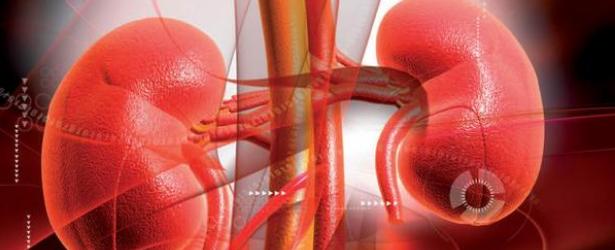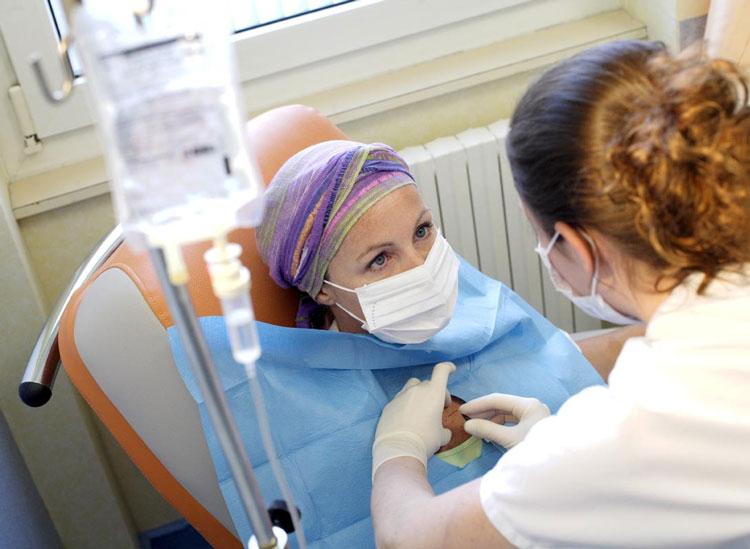Prevention of bladder cancer in women
Oncological diseases are not uncommon for women and men, but bladder cancer in the fairer sex is much less common. In young women, cancer is practically not diagnosed; in most cases, women aged 40 to 60 years are at risk.
Main reasons
Bladder cancer is characterized by the appearance and active growth of malignant cells that are located inside the mucosa of the organ. Due to the special structure of the urinary system, women are not as often worried about bladder cancer as men. But with the manifestation of adverse factors, the female body also affects a cancerous tumor. The most common causes of bladder cancer in women are:
- Prolonged smoking, in which all internal organs are injured. This is due to the fact that during the decay of tobacco, toxic products are excreted through the urinary tract.
- Frequent contact with chemicals that adversely affect the walls of the bladder. At risk are hairdressers, workers in chemical industries.
- Improper diet, which is dominated by fatty, fried, spicy foods.
- Radiation exposure - in most cases leads to malignant tumors.
- Deviations in the work of the urinary system, which gradually lead to the development of cancer. In women who have chronic cystitis, or with schistosomiasis of the internal organ, the likelihood of acquiring cancer is significantly increased.
Having found out as accurately as possible the cause of cancer in humans, doctors will be able to choose a more effective treatment that will negatively affect the development of malignant cells in the bladder.
Types and classification of stages
 There are several types of bladder cancer.
There are several types of bladder cancer.
Cancer of the internal organ is divided into different types and stages, depending on which various signs of bladder cancer appear. Depending on the degree of damage, there are invasive and superficial (non-invasive) cancer. Invasive cancer injures most of the internal organ and penetrates into the deeper layers. If an invasive oncological disease is diagnosed, then the rapid spread of cancer to neighboring internal organs is possible. In the case of non-invasive cancer, malignant cells spread exclusively to the lining of the bladder.
As the oncology of the bladder develops, it is divided into the following stages:
- At the initial stage, the pathology is marked by the penetration of the neoplasm into the mucous membrane of the bladder.
- At the second stage, malignant cells injure the muscle layer of the internal organ.
- The third phase of the disease is characterized by the germination of cancer through the fatty layer of the urinary wall.
- Bladder cancer of the 4th degree is marked by a complete lesion of the internal organ and an increase in oncological cells on the abdominal wall, organs of the reproductive system and in the pelvic bones. Women at this stage develop cancer of the vagina or uterus.
First signs
With bladder cancer in the early stages, special symptoms do not appear. Only the general poor health of a woman can be observed. Then various signs of a malignant tumor gradually appear. The main one is spotting during urination. In this case, a woman may not have pain, but the blood will be constantly present and increase in quantity. This is due to the fact that the tumor actively grows and bleeds. Features of hematuria in bladder cancer:
- Even a small tumor can bleed intensively, and a large one may not be accompanied by bleeding during urination. This fact sometimes makes it difficult to make an accurate diagnosis.
- Blood clots can have different sizes and shapes. Sometimes blood clots fill the internal organ to the fullest and lead to blockage of the bladder, and the impossibility of excreting urine is created.
- Spotting has a different color - from pink to deep red. But, in any case, these discharges are not similar to menstruation.
 A tumor of the urea is manifested by a violation of the process of excretion of urine.
A tumor of the urea is manifested by a violation of the process of excretion of urine. Oncological disease often causes dysuria in women, in which the process of urination is disturbed. Due to the growing tumor, the urethra is compressed, which provokes pain and stagnation of urine. At first, discomfort is located in the pubic area. Gradually, soreness affects the perineum and vagina.
Incontinence
Bladder cancer in women is predominantly accompanied by urinary incontinence or frequent urination. The patient complains of constant urge to urinate, which is not accompanied by urinary secretions. Sometimes there is an uncontrolled excretion of urine. Such first signs are noted in the case of the location of the malignant formation in the neck of the internal organ.
Bad smell
The next common symptom of a malignant tumor in the bladder is an unpleasant smell of urine. This indicates that the tumor began to decompose, and its particles began to come out with urine. The urine of a sick woman acquires an unpleasant smell of ammonia. When passing urine for analysis, a precipitate or purulent discharge is detected.
Symptoms of advanced cancer
 Blood in the urine signals the pathological processes occurring in the body.
Blood in the urine signals the pathological processes occurring in the body. Symptoms of bladder cancer in women begin to manifest as much as possible in the later stages, when the tumor began to actively grow. At first, a woman does not complain of suspicious symptoms, until such time as there are no bloody impurities in the urine. Gradually, the following symptoms appear:
- fast fatiguability;
- constant weakness;
- high temperature for a long time;
- lack of appetite;
- swelling of the lower extremities;
- spasm in the groin;
- painful excretion of urine.
Symptoms in women appear in a different order and get worse every day. This indicates the active growth of the formation and its spread to neighboring internal organs of the genitourinary system.
Pain in the suprapubic region
Pain in the suprapubic region occurs when the tumor grows and puts pressure on neighboring tissues. When paravesical tissue is damaged, a woman feels pain in the organs of the reproductive system, buttocks, sacrum and thighs. After a certain period, the pain in the suprapubic region becomes unbearable and cannot be eliminated with strong painkillers.
Secondary diseases and complications
 Oncological disease of the bladder entails a complication in the form of renal failure.
Oncological disease of the bladder entails a complication in the form of renal failure. Against the background of malignant formation, the development of such secondary pathologies and complications is possible:
- Kidney failure in a chronic form, in which there is itching of the skin, lethargy and drying of the mucous membranes.
- Impaired outflow of lymph occurs when metastasizing to the lymph nodes. In a woman in this case, the lower limbs swell.
- Fistulas in the rectum or suprapubic region lead to the necrosis of internal tissues.
- Hydronephrotic renal transformations, in which there is a disturbed outflow of urine.
Diagnostics
A comprehensive diagnosis of bladder cancer is considered a significant moment, since it allows you to maximize the study of the neoplasm, its nature, structure, localization and other related information. It is realistic to diagnose a malignant formation in the bladder using instrumental and laboratory methods, such as:
- General analysis of urine for cancer.
- Blood donation for general analysis and biochemical.
- Cytology determines the nature of malignant cells.
- Cystoscopic examination is aimed at diagnosing the mucous membrane of the internal organ. During the diagnostic procedure, the doctor uses an endoscope. When a cystoscopic examination is performed, a small part is taken to conduct a biopsy.
- Transabdominal ultrasound diagnostics is able to detect nodes in the bladder that have a diameter of 0.5 cm or more.
- To identify a malignant tumor that was localized in the neck of the bladder, a transrectal scan is prescribed.
- X-ray and computed tomography. Using these diagnostic methods, radiopharmaceutical hyperfixation in the bladder is detected, which indicates a high level of metabolic activity.
- More recently, doctors have developed a test that allows you to quickly identify cancer. It works similarly to a pregnancy test, but is not yet as popular. The diagnostic method is still at the development stage.
- When the tumor has a villous surface, then the woman is prescribed pyelography, which is performed using a contrast agent. In the process of diagnosis, the condition of the internal organ and ureters is determined.
Treatment: basic methods
 Chemotherapy is indicated in the complex course of the disease.
Chemotherapy is indicated in the complex course of the disease. When choosing a treatment method, the physiological characteristics of the individual patient, his age, and existing diagnoses are taken into account. The stage of cancer is considered especially important, and whether there is metastasis, which greatly complicates the treatment of bladder cancer. In the initial phases, the disease is easily treated and, in most cases, relapses are not observed. With a complex course, cancer treatment is indicated using the following methods:
- conservative therapy;
- chemotherapy;
- radiation therapy;
- targeted and immunotherapy;
- surgical intervention.




